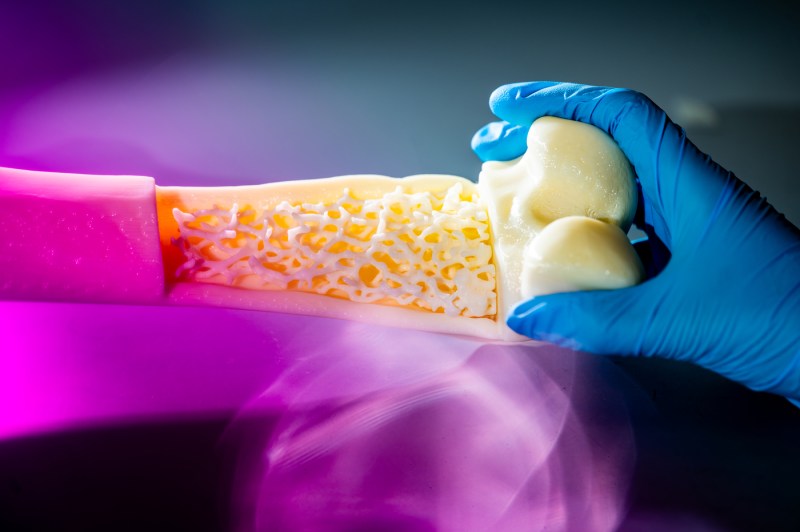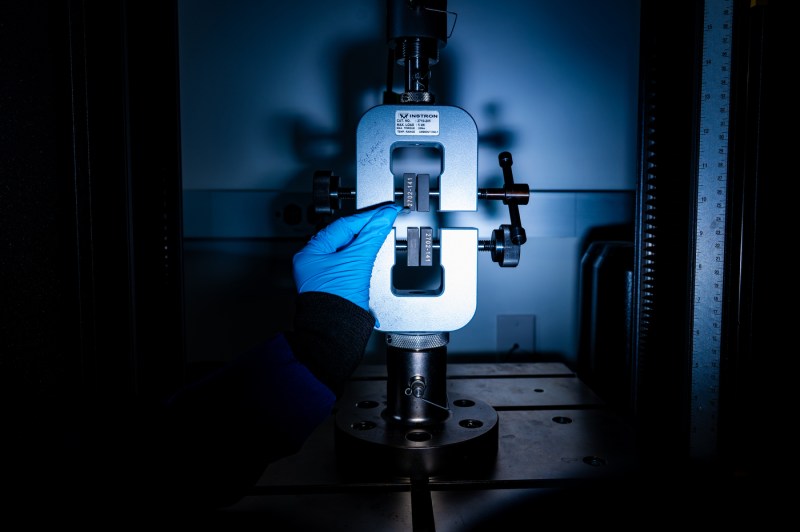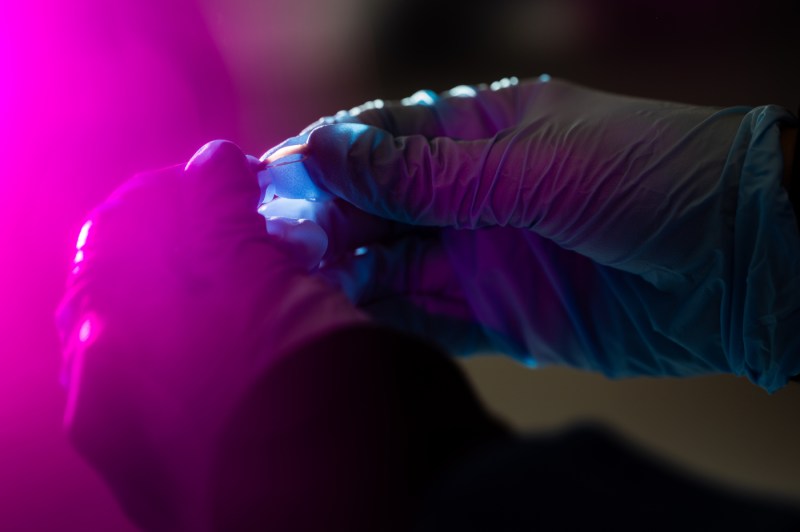Backflipping mice may hold the secret to what makes bones stronger
Northeastern researchers are conducting an experiment that trades wild, burrowing mice with non-burrowing lab mice to examine how much of bone development is evolutionary and how much responds to physical activity.

Go to the gym, lift a few weights. We all know that this will help you build stronger muscles — but did you know that this can help your bones get stronger, too?
New research from Northeastern University will study just how much of bone development is evolutionary and how much can be impacted by targeted, specific physical activity.
“If you put more load on the bones, they get stronger,” says Sandra Shefelbine, associate dean of space and special initiatives and professor of both mechanical and industrial engineering and bioengineering. “But we don’t really know how bones do that.”
Much of her research, she says, “is trying to figure out how that works, and how we can tap into that for therapeutic benefit.”

Photo by Alyssa Stone/Northeastern University

Photo by Alyssa Stone/Northeastern University

Photo by Alyssa Stone/Northeastern University
Trading places
The experiment will look at two species of deer mouse: a wild burrowing variety from the American Southwest and non-burrowing laboratory mice. Because deer mice are found “in a variety of habitats, each of these species have adapted accordingly to whatever habitat they’re in,” says Lindsey Young, the Ph.D. student leading the project under Shefelbine’s guidance.
Because the lab mice don’t burrow to create their homes — they prefer to either nest or steal other animals’ burrows, Young notes — Young’s previous research identified that the southwestern burrowing mice’s bones responded to load differently than their laboratory cousins.
“We found that the wild mice had bones that adapted through their shape much greater than these laboratory mice,” Young continues. But “why is this the case? We see the bones change, but we don’t know the whole process that goes behind this.”
The mice also have behavioral differences. The wild mice, Young notes, like to perform backflips. “They run around like crazy. They’ve got so much energy.”
Young and Shefelbine aim to determine how much of the deer mice’s bone adaptation is driven by activity in their environment — burrowing or not burrowing — versus evolutionary — two neighboring species that evolved within the same genus.

Photo by Alyssa Stone/Northeastern University

Photo by Alyssa Stone/Northeastern University
Editor’s Picks
To examine this, their mice will swap places: the wild southwestern mice will move into a more controlled laboratory environment and the lab mice will be moved into a special chamber that encourages burrowing. Within this environment, the researchers will observe the mice with specialized “X-ray technology, where we are able to track and visualize the movement of these mice as they create their burrows or run around,” Shefelbine says.
This way, the experimenters can observe how the mice’s “bones respond to their motion in a very natural, naturally relevant way,” she continues.
“In a typical lab environment, they don’t have digging capabilities,” Shefelbine says. The environment they’re creating for their mice will provide “a much more accurate representation of what they might be doing were they in the wild.”
The research will also survey mice of different ages, from young to old, so there are implications for this research on both sides of the lifespan, says Shefelbine, from creating stronger, healthier bones in adolescents as they develop, to how we understand and treat later-in-life conditions like osteoporosis.
Shefelbine and Young received a grant from the National Science Foundation to support the experiment, which will run for three years, the results of which will be Young’s dissertation.
Getting to the bones
Young didn’t start her research career thinking about bones. “I knew that, even as a mechanical engineering undergrad, that I wanted to go for more biologically relevant work,” she says.
When she came to Northeastern for her master’s degree, she took a course taught by Shefelbine on musculoskeletal biomechanics. “I was like, ‘Perfect.’ Bone is a very mechanically relevant material.”
Young also wanted “to work with animals, see how animals behave and how they adapt. So this felt like a really cool intersection of my training, my education, my interests.”
Perhaps unsurprisingly, both researchers’ attitudes toward fitness have been changed by their work.
“Always take the stairs,” Shefelbine says with a laugh. “Always take the stairs, it’s good for your bones.”
“It’s definitely motivating me to exercise,” Young says. “I sometimes think, ‘I don’t think my bones are gonna like this couch time.’”











